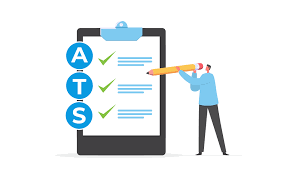An ATS resume checker is a crucial tool for job seekers today. Many applicants unknowingly make mistakes in their resumes that can prevent them from getting noticed by potential employers. One of the most common errors detected by an ATS resume checker is improper formatting. Fancy fonts, graphics, tables, or even unique bullet points might make your resume visually appealing, but they can confuse the system. An ATS is designed to read plain text and standard formats, so using complex layouts can cause it to misread or skip over vital information.
Another frequent issue is the lack of relevant keywords. An ATS resume checker scans your resume for specific terms and phrases related to the job you're applying for. If your resume doesn't contain the right keywords, the system may rank you lower than other candidates. This is why it’s important to tailor your resume for each job by using terms from the job description.
Generic resumes are another pitfall. Many people submit the same resume for every job application, assuming it will work across industries. However, an ATS resume checker is looking for resumes that are specifically customized for the role. This includes using job-specific language and demonstrating that you possess the skills and qualifications outlined in the job listing.
Additionally, many resumes fail to quantify achievements. An ATS resume checker might not penalize you directly for this, but human reviewers expect to see tangible results. Adding metrics and numbers to your accomplishments shows potential employers the impact you've had in previous roles.
Lastly, some candidates try to trick the ATS resume checker by hiding extra keywords in white text or by stuffing them in irrelevant sections. While this might have worked with older systems, modern ATS software can detect such tricks, and it could harm your chances more than help.
2. "How Does an ATS Resume Checker Rank Your Resume?"
Understanding how an ATS resume checker ranks your resume can help you improve your job search strategy. When you submit a resume to a company, it is often first reviewed by an ATS, which acts as a filter before human eyes ever see it. An ATS resume checker scans resumes for specific keywords, formats, and relevant experience that match the job posting.
The first thing an ATS looks for is the presence of keywords. The job description often contains clues about what terms the company is looking for. An ATS resume checker will search for these keywords to rank resumes based on how closely they align with the job requirements. If you have the right words in your resume, such as skills, job titles, and certifications relevant to the position, your ranking will be higher.
However, it’s not just about stuffing your resume with keywords. The ATS resume checker also evaluates the context in which these terms appear. For example, the software is smart enough to recognize whether you’ve listed a keyword like "project management" as a skill or just mentioned it once in passing. Including keywords naturally and in relation to your experience is key to improving your ranking.
Next, the ATS resume checker considers your work history. It scans for the roles you’ve held and whether your experience fits the job description. Chronological order and job titles matter, so ensure that your most relevant experience appears first, and that your job titles are clear and standard.
An ATS resume checker also factors in the education section of your resume. While this might not carry as much weight as experience, some jobs require specific degrees or certifications that the ATS will prioritize. Ensuring this section is clear and well-organized increases your chances of getting ranked higher.
Finally, formatting plays a role. An ATS resume checker prefers simple, standard resume formats without intricate designs, which might make it harder for the system to process your information correctly.



